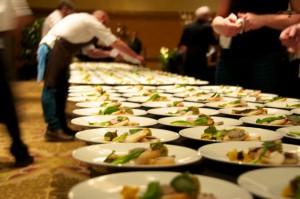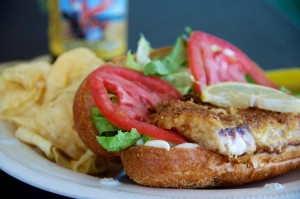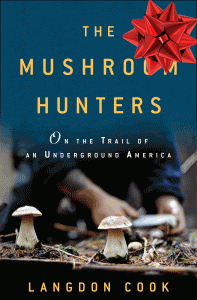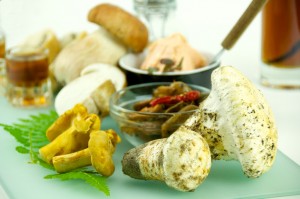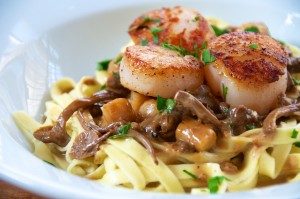 WHILE ANY MUSHROOM can be used in this dish, wild yellowfoot mushrooms in particular complement the sweetness of the Marsala wine as well as the scallops, and they add body to the sauce. The cheese adds some oomph, and helps thicken the sauce, though you can get away without it. If you have the time, make your own pasta, or buy the fresh stuff.
WHILE ANY MUSHROOM can be used in this dish, wild yellowfoot mushrooms in particular complement the sweetness of the Marsala wine as well as the scallops, and they add body to the sauce. The cheese adds some oomph, and helps thicken the sauce, though you can get away without it. If you have the time, make your own pasta, or buy the fresh stuff.
9 oz fettuccine
1/2 lb scallops (or more, to taste)*
1/2 lb wild mushroom, chopped
1/4 cup diced shallot
3 tbsp butter
1/2 cup Marsala wine
1 cup beef stock
1 cup heavy cream (or less)
1/2 cup grated parmesan (optional)
chopped parsley for garnish
salt and pepper
* I used a half-pound of small bay scallops plus a few large sea scallops.
1. Boil water for pasta.
2. Pat scallops dry and season with salt and pepper. Pan-sear in 1 tablespoon butter over medium-high heat. Remove to bowl.
3. Saute shallots in remaining 2 tablespoons butter until soft. Add mushrooms and cook together a few minutes, cooking off liquid.
4. De-glaze with 1/2 cup Marsala. Cook until Marsala is nearly evaporated. Add beef stock and reduce by half. Lower heat to medium and slowly stir in heavy cream to taste.
5. While sauce is reducing, cook pasta according to instructions.
6. Stir in optional parmesan cheese and return scallops to sauce. Adjust seasonings.
7. Spoon sauce over pasta and garnish with fresh parsley.
Serves 2


